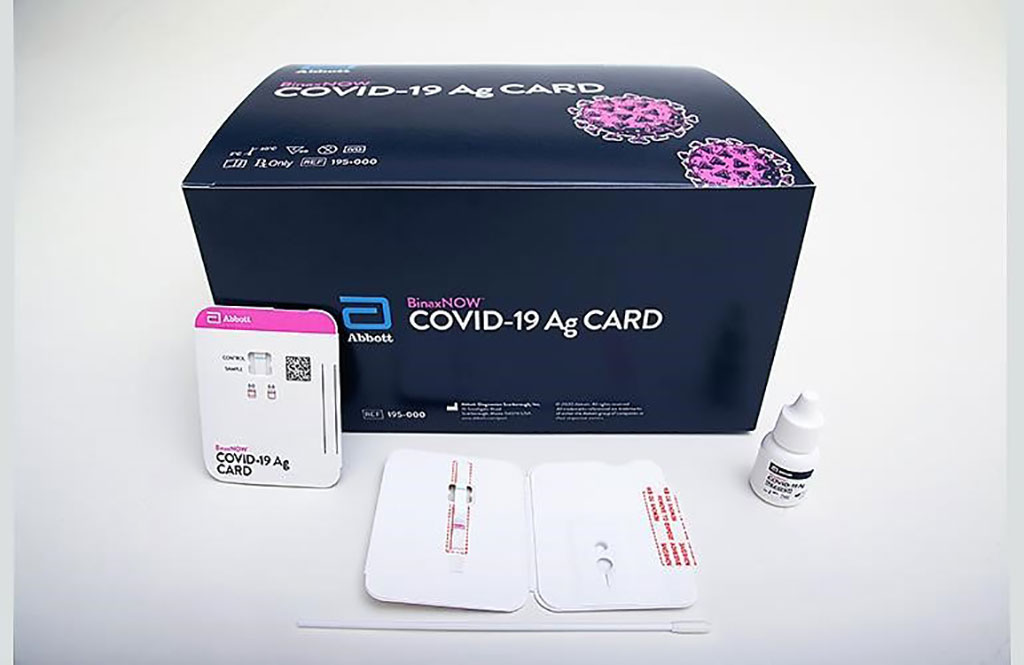Serial SARS-CoV-2 Rapid Antigen Testing Evaluated During Outbreaks
By LabMedica International staff writers
Posted on 13 May 2021
Serial, facility-wide testing for SARS-CoV-2 can help identify cases in outbreak settings, allowing for rapid implementation of transmission-based precautions and infection prevention and control strategies. Posted on 13 May 2021
Although real-time reverse transcription polymerase chain reaction (RT-PCR) testing performed in a laboratory has the highest sensitivity, its prolonged turnaround time can delay quarantine and isolation implementation. Antigen tests are easy to use and produce results in minutes, facilitating rapid action, particularly during outbreaks in congregate settings.

Image: BinaxNOW COVID-19 Ag Cards (Photo courtesy of Abbott Laboratories)
Medical Scientists at the Centers for Disease Control and Prevention (CDC, Atlanta, GA, USA) carried out a prospective study that included 532 specimens from 234 available residents and staff at a nursing home experiencing a SARS-CoV-2 outbreak to evaluate the performance of antigen testing when used during an emerging outbreak. Two specimens were collected from all residents and staff three times over a 13-day period. Trained laboratory scientists tested one swab onsite using a rapid antigen test and the other was sent to the CDC for RT-PCR and virus culture reference testing.
The percentage of positive agreement (PPA) and percentage of negative agreement (PNA) for BinaxNOW COVID-19 Ag Cards (Abbott Laboratories, Abbott Park, IL, USA) compared with RT-PCR using the CDC Influenza SARS-CoV-2 (Flu SC2) Multiplex Assay on the Applied Biosystems 7500 Fast Dx Real-Time PCR Instrument (Thermo Fisher Scientific, Waltham, MA, USA) and virus culture was done using Vero CCL-81 cells.
The team reported that BinaxNOW PPA with virus culture, used for detection of replication-competent virus, was 95%. However, the overall PPA of antigen testing with RT-PCR was 69%, and PNA was 98%. When only the first positive test result was analyzed for each participant, PPA of antigen testing with RT-PCR was 82% among 45 symptomatic people and 52% among 343 asymptomatic people. Compared with RT-PCR and virus culture, the BinaxNOW test performed well in early infection (86% and 95%, respectively) and poorly in late infection (51% and no recovered virus, respectively).
The authors concluded that although their data suggest that nearly a third of RT-PCR-positive infections were missed overall, the antigen test was able to identify 86% of infections when testing was done during early infection when people are more likely to be infectious. Previous work has shown that people can continue to test positive for SARS-CoV-2 by RT-PCR for weeks after they are no longer infectious. Thus, comparisons of antigen testing with virus culture might provide a more accurate measure of antigen test performance for identifying infectious people. The study was published on April 27, 2021 in the journal Annals of Internal Medicine.
Related Links:
Centers for Disease Control and Prevention
Abbott Laboratories
Thermo Fisher Scientific














